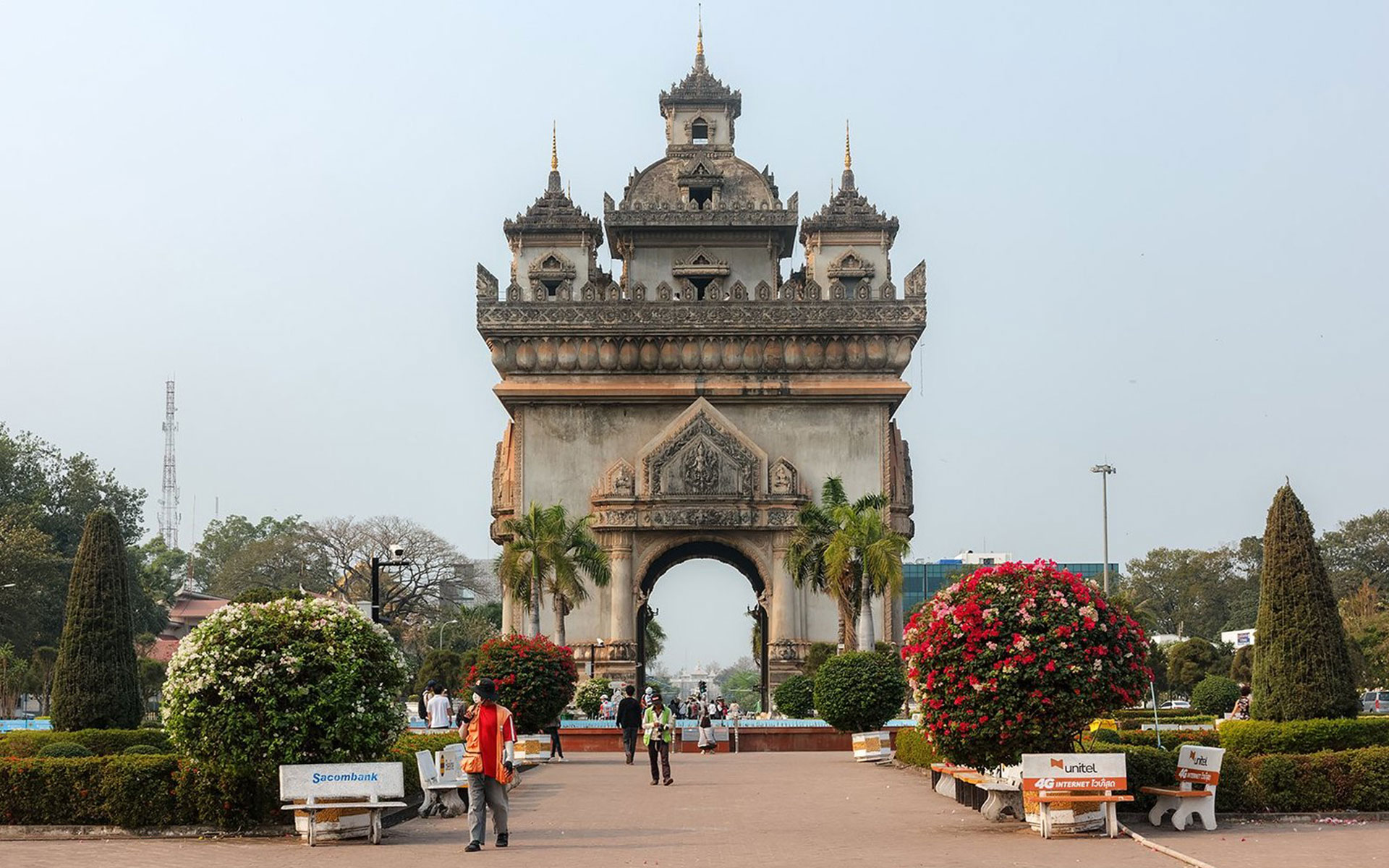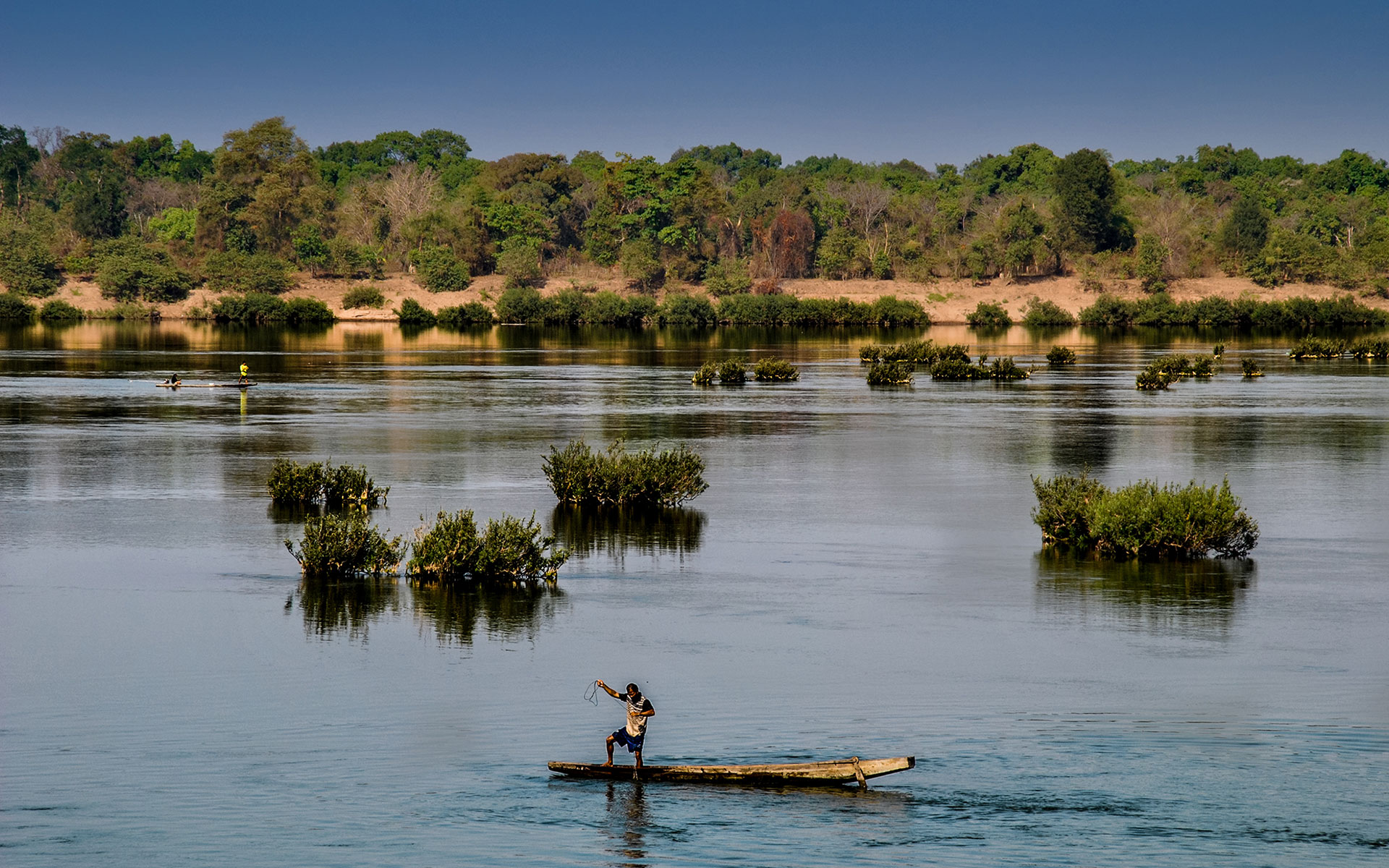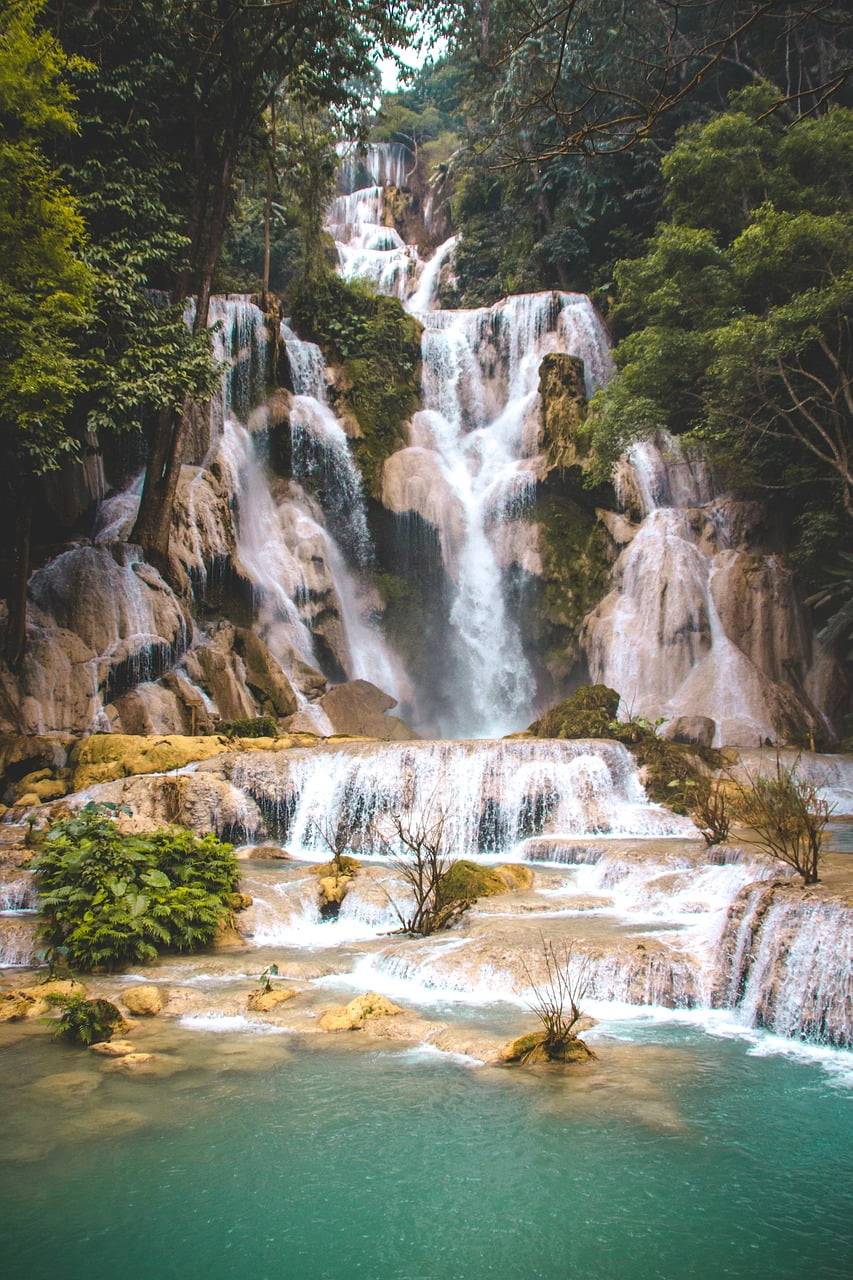Understanding Laos’s Climate
Laos, nestled in the heart of Southeast Asia, experiences a tropical monsoon climate, characterized by distinct seasonal variations that significantly impact travel plans. The climate can be broadly categorized into three main seasons: the hot season, the rainy season, and the cool season. Each of these seasons brings its own set of climatic conditions, influencing the experiences and expectations of travelers visiting the region.
The hot season typically spans from March to May, with temperatures frequently soaring above 35°C (95°F). This period is marked by intense heat and relatively low humidity, making it a challenging time for outdoor activities. However, the clear skies and abundant sunshine create ideal conditions for exploring Laos’s cultural and historical landmarks. Travelers should be prepared for the heat by staying hydrated and wearing sun protection.
The rainy season, extending from May to October, is influenced by the southwest monsoon. During this time, Laos receives the majority of its annual rainfall, with humidity levels rising significantly. The average temperatures during the rainy season range from 25°C to 30°C (77°F to 86°F). While the frequent downpours can disrupt travel plans and make some remote areas inaccessible, the landscape transforms into a lush, green paradise. This season offers a unique experience for those interested in witnessing the vibrant natural beauty of Laos, but it’s essential to have flexible travel arrangements and appropriate rain gear.
From November to February, Laos experiences the cool season, which is considered the most pleasant time to visit. Temperatures during the day range from 15°C to 25°C (59°F to 77°F), with cooler nights, especially in the mountainous regions. The reduced humidity and mild temperatures create perfect conditions for outdoor activities such as trekking, sightseeing, and exploring the countryside. This season attracts the highest number of tourists, so it’s advisable to book accommodations and tours in advance.
The geography of Laos, with its mountainous regions and lowlands, plays a crucial role in shaping the weather patterns. The northern and eastern highlands experience cooler temperatures and more rainfall compared to the lowland areas in the south. This variation in climate across different regions offers diverse experiences for travelers, from misty mountain treks to serene river cruises.
Understanding the climatic conditions of Laos is essential for planning a successful trip. By aligning travel plans with the weather patterns, travelers can make the most of their visit, whether they’re seeking adventure in the great outdoors or cultural immersion in the country’s rich heritage.
Best Time to Visit Laos
When planning a trip to Laos, understanding the seasonal weather variations is crucial for an optimal travel experience. The best time to visit Laos is generally during the cool season, which typically spans from November to February. During this period, travelers can enjoy comfortable temperatures ranging from 15°C to 27°C (59°F to 81°F) and relatively low humidity. This makes it an ideal time for outdoor activities such as trekking, sightseeing, and exploring the rich cultural heritage of the country.
The cool season is particularly favored by tourists because it aligns with numerous festivals and events, including the famous Bun Pha Wet festival in January. Additionally, the pleasant weather conditions ensure easier transportation and access to various attractions without the inconvenience of heavy rains or extreme heat.
However, visiting Laos during the hot season, which extends from March to May, has its own set of advantages and challenges. Temperatures in this period can soar up to 40°C (104°F), making it less comfortable for extensive outdoor activities. On the brighter side, the hot season is marked by fewer tourists, resulting in less crowded sites and potentially better deals on accommodations and tours. This season is perfect for those interested in experiencing local life and visiting less touristy areas without the hustle and bustle.
The rainy season in Laos, from June to October, transforms the landscape into a lush, verdant paradise. Although the frequent rains can disrupt travel plans and make certain regions inaccessible, the monsoon period offers a unique charm with its vibrant greenery and rejuvenated rivers and waterfalls. The rainy season is well-suited for eco-tourism, photography, and enjoying the natural beauty of the countryside. Additionally, travelers can benefit from lower prices and the opportunity to witness the traditional Lao way of life, which remains largely unaffected by the tourist influx.
In conclusion, while the cool season is widely regarded as the best time to visit Laos due to its favorable weather conditions, each season offers its own distinct experiences and benefits. Understanding these seasonal nuances will help travelers make informed decisions and tailor their trips to align with their preferences and interests.
Laos Weather By Regions
Weather of the North Laos
(includes the villages in the hills, mountains and the ancient capital.)
During cold dry season of November through February, the northern regions cool down and can even approach freezing at higher altitudes, especially in coolest months of year from December to January. During this time, the sunshine is less and the sky is often cloudy. In the further North of mountainous areas, there is often dull weather with some drizzle.
In this winter time, the nights are cool in the north. In Luang Prabang, the average temperatures can be around 27-28 °C (81-82 °F) at high or 14-15 °C (57-59 °F) at low.

Overview of Luang Prabang – the first UNESCO World Heritage Site in Laos.
For March and April which are hottest period of the year, this is also in the burning of the fields so the air can be as smoky and cause discomfort for breathing until the monsoon season starts in May. The temperature of this period can exceed 32 °C (90 °F), and also expect the waterfall around Luang Prabang to be in poor conditions.
When the wet season comes, the sun comes out so often. Further North and in Luang Prabang, rainfall tends to be lighter and you can often expect rain during the nights or mornings with some relatively clear afternoons. However, if at peak rainy time (August / September), you can be prepared to some delay and occasional floods.
Weather of the Central Laos
(includes the capital Vientiane and the countryside.)
Central Laos is where the capital Vientiane is situated and this part of the country also attracts more and more coming to discover the natural attractions and outdoor opportunities of the nearby Vang Vieng and Plain of Jars.

Known as Victory Gate, Patuxai is one of the most important monuments of Vientiane dedicating to those who fought in the struggle for independence from France.
Early dry season gives the best time for those who are looking for the nature as everything is still lush and impressive. The sun frequently shines and low temperature is great for trekking experience. In Vientiane, you can expect temperatures between 30°C – 38°C in hottest seasons which starts in March and high levels of humidity in wet season from May. The rainfall can be 1,600 mm (63 in) yearly which becomes abundant in August and September while they are rare in dry season. The winter temperatures are also slightly higher, and cold air outbreaks are less frequent and less intense.
Weather of the South Laos
(includes the Mekong Delta, mountains and is the area least visited by tourists.)
In the Southern Laos, there are not much differences between cold and hot season as winter is even warmer with the highs at around 30-31°C (86-88°F) even in December and January. It also never gets as cold as it does in the North at nights. Further South Laos as Pakse, the sun shines more often than in Vientiane and center of the country in dry season, while the rains are abundant with amount to 2,000 mm (80 in) per year or even exceed 300 mm (12 in) per month.

The peaceful Mekong River in Laos.
The rainy season of the provinces near the Mekong is slightly less strong, but the area around the river can still experience the floods. Visit Si Phan Don, Savannakhet and Pakse can be a good destination all year round.
In recent years, Mekong River water levels have been at historic lows during February and March, partially due to global warming and lower rainfall, and more due to newly Chinese installed river dams.
Best visited time to Laos
Generally speaking that Laos has two distinct seasons and this country can be visited all year round as each season has its own reason to come and experience. However, the best visited time in Laos is from November to February because it is the coolest part of the dry season which makes the weather perfect for any kind of activity.
Visiting Laos at its best time (November to February) when the weather is the most pleasant will give you enjoyable feelings.
Traveling in this period, it can be slightly overcrowded in some period. Typhoons or tropical storms may still affect the country, even in the first half of December and the temperature can start to rise since February.
Also note that dry season includes peak season, especially in Christmas/New Year Eve or Lao New Year in mid-April when the travel expenses are expected to increase. Therefore, it is better that you need to make the travel service reservations at earliest stage as possible to avoid full occupancy or lower service quality.
What to pack?
For dry season: A light jacket is enough when travelling in the south while in the north, heavier clothes are necessary in the winter time. Sneakers or trekking shoes are needed if you plan to go hiking while sandals and flip flops are everything you need to move around towns. A good sun screen with high protection is always needed against the heat of tropical sun although Laos has no beach. Bath suit is a must for a dip in a waterfall or in the river, but modest one is suggested to pay respect to the local people who often get fully clothed while swimming.
Depending on your travel time and style, you can have the suitable preparation and packing for the most comfortable journey while in Laos.
For wet season: Lightweight clothing of natural fibers, light raincoat or umbrella, and light sweatshirt should be in your package. Warmer clothes are still necessary if you are in mountainous areas, especially for early mornings or late evenings. During this season, mosquito spray is highly recommended to prevent you from the nasty mosquitos or you can wear long cotton trousers to protect your legs better at night. Leaches socks are good choice if you’re going trekking during the rainy season.
Dress neatly when entering the temples in Laos. Women are required to cover the shoulder and knees while men should avoid sleeveless t-shirt. Also remember to remove your shoes before entering any Laotian home or temples as it is customary.
Hot Season (March to May)
During the hot season, temperatures can soar, making lightweight and breathable clothing essential. Opt for natural fabrics like cotton and linen, which allow your skin to breathe. Loose-fitting shirts, shorts, and dresses are ideal. Sun protection is paramount; pack a wide-brimmed hat, sunglasses, and high-SPF sunscreen to shield yourself from intense UV rays. Consider bringing a reusable water bottle to stay hydrated and a portable fan for additional comfort.
Rainy Season (June to October)
The rainy season in Laos brings heavy downpours and high humidity. Waterproof gear is a must, including a quality rain jacket, waterproof shoes, and a sturdy umbrella. Quick-drying clothes will be your best friend—think synthetic fabrics that won’t retain moisture. Don’t forget a rain cover for your backpack and waterproof pouches for electronics. Given the lush environment, insect repellent is crucial to fend off mosquitoes and other pests. A lightweight, foldable poncho can also be a convenient addition to your packing list.
Cool Season (November to February)
The cool season offers the most temperate weather, but mornings and evenings can be quite chilly, especially in northern Laos and higher altitudes. Layered clothing works best; start with a base layer, add a thermal shirt, and top with a fleece or light jacket. Long pants and closed-toe shoes will keep you warm. A scarf and gloves may also be necessary for particularly cold days. Sun protection remains important as UV rays can still be strong, especially at higher elevations.
Essential Accessories
Regardless of the season, some items are universally important. Comfortable and durable footwear is essential, given the varied terrain. Pack a pair of sturdy walking shoes or hiking boots, depending on your activities. A small first-aid kit, including basic medications, can be very useful. Cultural considerations are also important; Laos is a modest country, so pack clothes that cover your shoulders and knees, particularly for visiting temples and rural areas. A lightweight scarf can serve multiple purposes, from sun protection to a respectful covering when needed.
Preparing for unexpected weather changes is always a good idea. Layering allows for quick adjustments to fluctuating temperatures, and carrying a small, packable rain jacket can save you from sudden showers. With the right preparation, you can enjoy all that Laos has to offer, regardless of the weather.
Weather-Related Travel Tips and Safety Advice
Traveling in Laos offers a unique experience, but it’s crucial to be prepared for the diverse weather conditions you may encounter. The hot season, typically from March to May, can be particularly challenging for travelers. Staying hydrated is paramount; always carry a bottle of water and drink regularly to avoid dehydration. Wearing light, breathable clothing and a wide-brimmed hat can help protect you from the intense sun. Additionally, apply sunscreen with a high SPF to shield your skin from harmful UV rays.
During the rainy season, which spans from May to October, travelers should exercise caution. Heavy rains can lead to slippery roads and potential flooding, making travel more hazardous. Ensure your footwear has good grip to navigate wet surfaces safely. It’s advisable to check road conditions and stay updated with local weather forecasts to plan your activities accordingly. If severe weather is predicted, consider delaying travel or choosing safer routes. In the event of flooding, avoid walking or driving through waterlogged areas as the depth and current can be deceiving.
Monitoring weather forecasts is essential for a safe and enjoyable trip. Utilize weather apps and local news channels to stay informed about any weather changes. Should you encounter severe weather conditions, seek shelter immediately and follow any local advisories or warnings. Many accommodations provide emergency procedures and contact information, which can be helpful in urgent situations.
For days when the weather is not conducive to outdoor exploration, consider indulging in indoor activities. Laos is rich in cultural and historical sites, such as museums and temples, offering fascinating insights into the country’s heritage. Additionally, visiting local markets and trying traditional Lao cuisine can be a delightful alternative. Planning indoor activities can ensure that your travel plans remain enjoyable, regardless of the weather.
By following these tips and staying prepared for Laos’s weather-related challenges, travelers can ensure a safer and more pleasant journey.



xenical brand – https://asacostat.com/# xenical for sale online
forxiga 10 mg cost – https://janozin.com/ dapagliflozin 10mg generic
Greetings! Extremely useful advice within this article! It’s the petty changes which liking espy the largest changes. Thanks a a quantity for sharing! http://www.predictive-datascience.com/forum/member.php?action=profile&uid=44944
With thanks. Loads of knowledge!
https://doxycyclinege.com/pro/esomeprazole/
This is the make of advise I turn up helpful. https://ondactone.com/spironolactone/
More posts like this would create the online space more useful. https://aranitidine.com/fr/en_france_xenical/
With thanks. Loads of knowledge! https://prohnrg.com/product/diltiazem-online/
This website really has all of the bumf and facts I needed about this thesis and didn’t identify who to ask. https://ursxdol.com/cialis-tadalafil-20/
Thanks on sharing. It’s acme quality. buy cheap generic tamoxifen
This is the stripe of content I enjoy reading. https://buyfastonl.com/furosemide.html
ranitidine online buy – aranitidine order ranitidine 300mg sale
viagra 50 mg coupon – buy viagra online cheap dapoxetine 60 mg sildenafil 100mg
cialis how to use – https://strongtadafl.com/ cialis commercial bathtub
buy cialis no prescription overnight – https://ciltadgn.com/# can you drink wine or liquor if you took in tadalafil
cenforce pill – https://cenforcers.com/ cenforce 50mg tablet